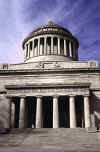 |
New York
Architecture Images-Harlem and the Heights Grant’s Tomb |
|
architect |
John H. Duncan |
|
location |
Riverside Drive at 122nd St. (212) 666-1640 |
|
date |
1897 |
|
style |
Neo-Classicism |
|
construction |
limestone |
|
type |
Monument |
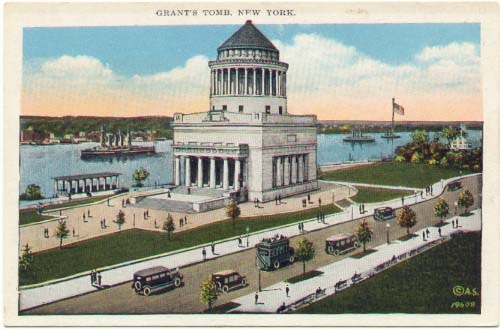 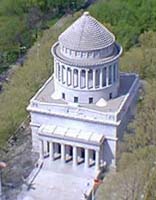 |
|
 |
|
|
images |
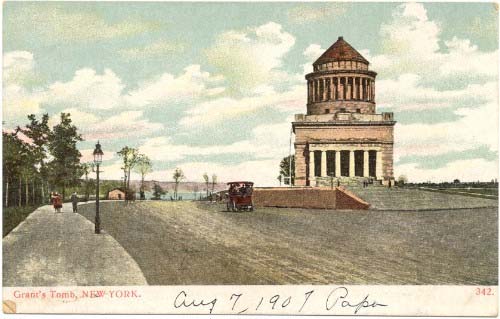 |
|
|
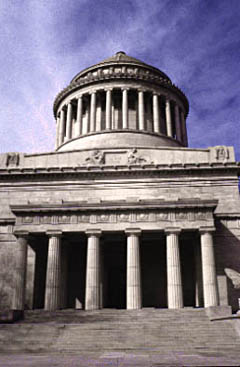 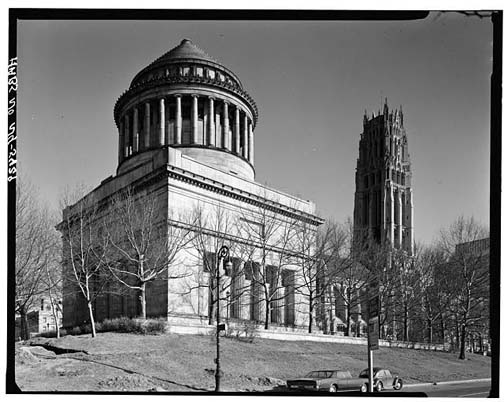 |
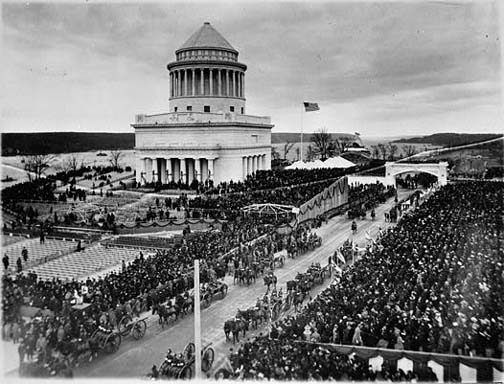 |
|
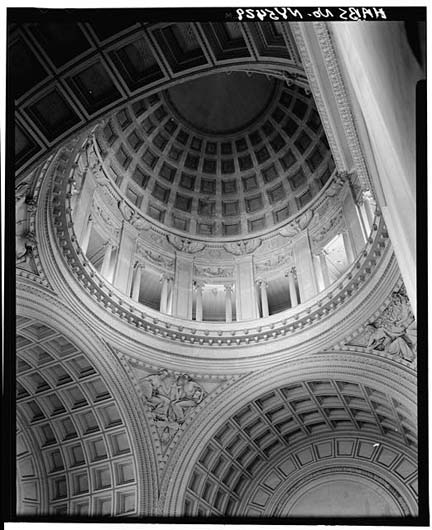 |
|
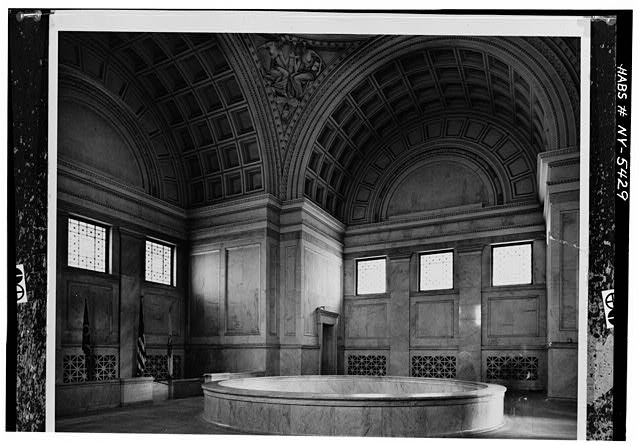 |
|
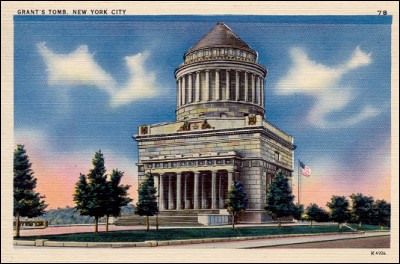 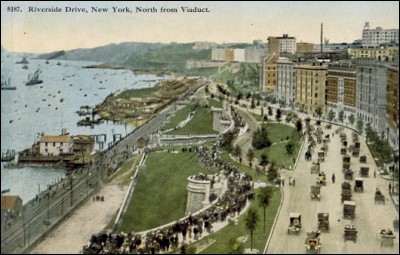 |
|
|
The mausoleum of Ulysses S. Grant, this
building exemplifies the presence of social institutions and high
culture in Morningside Heights. It also reflects the panthesitic
experimentation of the period immediately following the Civil War.
Financed by public contributions, the marble building is rendered in an
eclectic classical style reminiscent of the Pantheon. Inside, it houses
the black granite sarcophagi of Mr. and Mrs. Grant. Undulating mosaic
benches by Pedro Silva and the City Arts Workshop [1973] surrounding the
tomb were are a community project intended to beautify the site.
Morningside- Once an once important battlefront during the American Revolution, this area sits atop a high rock escarpment above the city where the air often seems purer. In the 19th century the area was home to high-minded institutions such as the Leake and Watts Orphanage, the Bloomingdale Asylum, a home for the aged, and other institutions. Served only by horsecars, the city seemed to be reaching the borders of the Heights in the last quarter of the 19th century, giving rise to a spate of Episcopalian related institutions which sought to create America's new pantheon of good will organizations. Developers pushed north from the Upper West Side and built fine apartment houses along Riverside Drive in the early 20th century. Riverside Park and the Columbia campus provided greened and open spaces for the streets surrounding the university. |
|
|
Who's Buried in Grant's Tomb? This is an old joke to which the answer is no one. Our eighteenth president and his wife are, however, entombed here. Made of 8,000 tons of granite, with Massachusetts marble for the floors and fine Italian marble for the railings and trimmings, Grant's Tomb sits high above the Hudson River in the midst of a beautiful park. It was once one of the most popular attractions in New York City, although it rarely attracts much of a crowd today. The History of Grant's Tomb Ulysses Simpson Grant, a Civil War hero who was thought to be chiefly responsible for the defeat of the Confederacy, was perhaps the most popular American in his day. Although his eight-year presidency was marred by government corruption, Grant was nevertheless held in great esteem by millions of Americans when he died (of throat cancer) on July 23, 1885. Even before his death, the Grant Monument Association had been formed to raise funds for constructing a monument in his name. Ultimately, 90,000 people donated $600,000 to the project. At the time, this was the most money that had ever been raised for a public monument. Given Grant's popularity, it was a major coup for New York City when William Grace, the city's mayor, secured the site where the monument now stands as Grant's final resting place. There is no doubt, however, that this political victory was aided by Grant's request that he be buried in St. Louis, Galena, Illinois, or New York City, rather than Washington D.C. The original design for the monument by John Duncan, the New York architect chosen by the Grant Monument Association, was far too ambitious given the amount of money budgeted for construction. Duncan's elaborate vision, which included stairs leading down to a dock on the river, under which a train would have passed, was abandoned and the monument itself was scaled back to half the size of the original plan. The monument was dedicated on April 27, 1897. Although it pales in comparison to the original plans, the monument, officially known as the General Grant National Memorial, is still an impressive site and is the largest tomb in North America. What You Will See We admit to being impressed with the size of the structure when we first entered Grant's Tomb. Look up and you will be able to see the distant top of its dome. Go to the circular railings in the middle of the room and look below to see the tomb of Ulysses S. Grant on the left and the tomb of Julia Dent Grant on the right. The tombs, and the marble which surrounds them, are majestic and befitting for a president and his wife. But after a few minutes we realized that there really isn't much else to see. There are basically four rooms. In addition to views of the dome and the tombs, the main room contains allegorical statues which depict Grant's childhood, service to the military, presidency, and death. Small exhibits on either side of this room also provide information about Grant's career and tell the story of the monument's construction. Finally, colorful mosaics that depict some of Grant's greatest moments on the battlefield, decorate the upper part of three of the room's walls. On either side of this main chamber are two small, identical rooms wallpapered with maps that show all of the significant battle sites of the Civil War. The fourth room, below, is where the tombs lie. The tombs stand in the center of this circular room, surrounded by busts of Grant's closest friends, such as General Sheriden and General Sherman. And that, as brief as it may have been, is Grant's Tomb. Why Go To Grant's Tomb? The best reason to go to Grant's Tomb is to say that you have been there and have seen it. Since the memorial is free and open seven days a week, it is relatively convenient. So if you have a couple of hours to kill while you are in the city and have some interest in Grant, we recommend that you take a trip over to the northern section of Riverside Park and look around. While in the neighborhood, be sure to stop by Columbia University, Riverside Church, and The Cathedral of St. John The Divine. Grant's Tomb is one of six New York City sites run by the National Park Service. (The others are Castle Clinton, the Theodore Roosevelt Birthplace, St. Paul's, Federal Hall, and Hamilton Grange National Memorial. As with the other places run by the Park Rangers, the tours are informative and worthwhile. If there is no tour in progress when you arrive, ask for one -- they are available, although not on a fixed schedule. Taking a tour and seeing all that there is to see will take no longer than an hour, making Grant's Tomb the perfect place to go at lunch time. After you've seen the monument, consider having a picnic out on the benches or in the attractive park nearby. When To Go We went on a Sunday, which, we were told, is the busiest day of the week. The monument used to attract quite a crowd, largely because it was the closest thing to a war memorial American veterans had. That has, of course, changed. Bottom line: don't worry about crowds, whenever you go. Even if your arrival coincides with busloads of visitors, the memorial's layout is such that you will not miss a thing. How To Get There By subway, take the 1 or the 9 to 116th Street. Walk north to 122nd Street and turn left. When you arrive at Riverside Drive, Grant's Tomb will be in front of you. Parking is available for those who prefer to drive. Hours: Daily, 9 a.m. - 5 p.m. Admission: Free |
|
|
links |
|